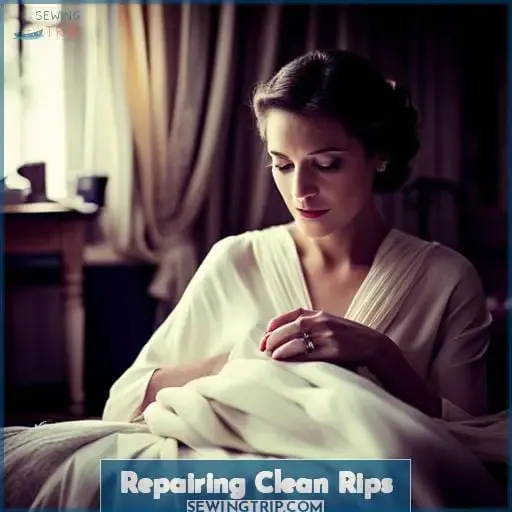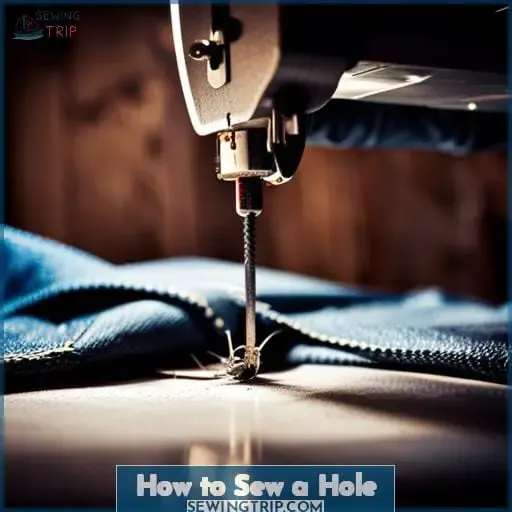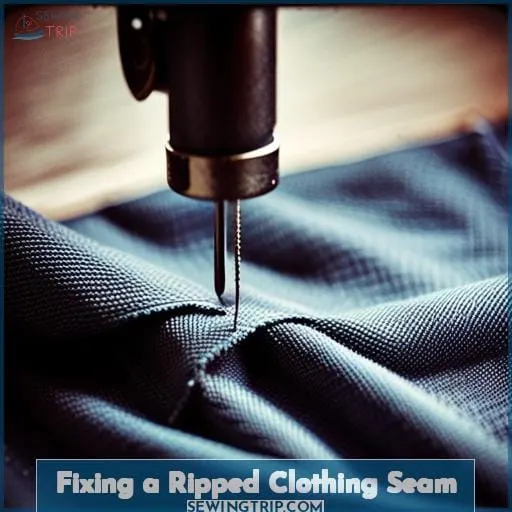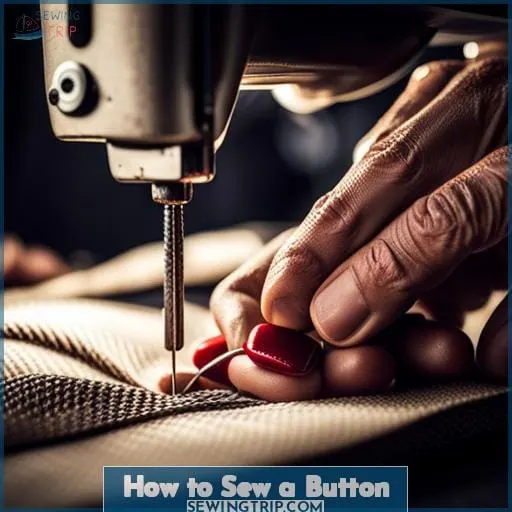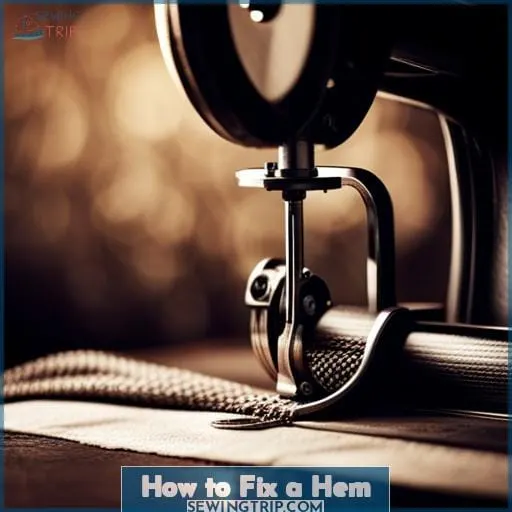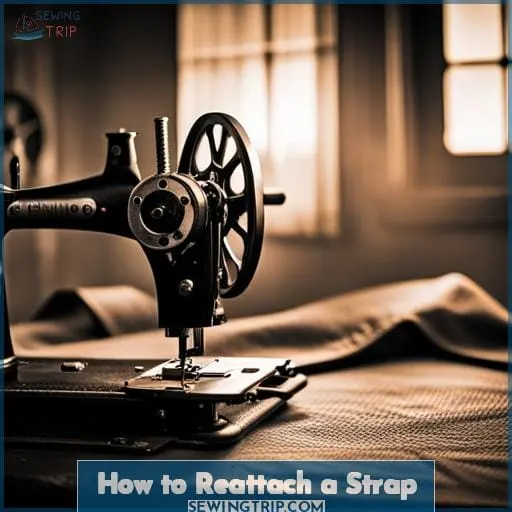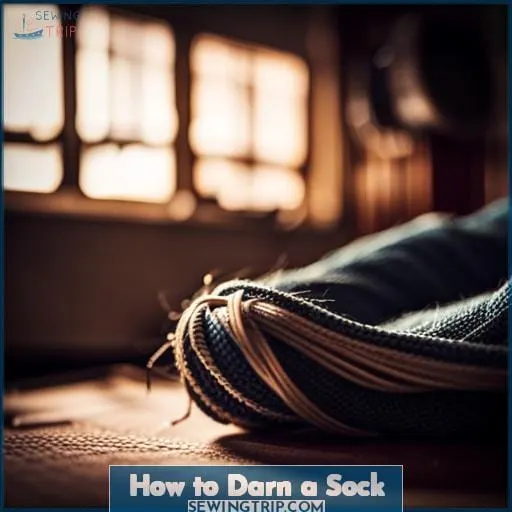This site is supported by our readers. We may earn a commission, at no cost to you, if you purchase through links.
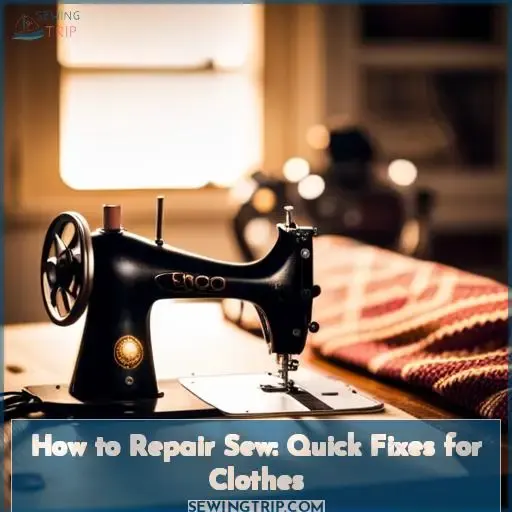 Ready to take control of your wardrobe and master the art of quick clothing fixes? When it comes to keeping your favorite clothes in top shape, knowing how to repair sew can be a game-changer.
Ready to take control of your wardrobe and master the art of quick clothing fixes? When it comes to keeping your favorite clothes in top shape, knowing how to repair sew can be a game-changer.
Whether it’s a pesky rip, a missing button, or a loose hem, you can liberate yourself from the frustration of wardrobe malfunctions. In this guide, you’ll learn the essential skills to mend your clothing like a pro.
From stitching up rips with precision to seamlessly reattaching buttons, we’ll walk you through the steps to regain control over your fashion choices.
No more tossing aside your beloved garments at the first sign of wear and tear. With these techniques, you’ll be equipped to repair sew with confidence, ensuring your clothes not only survive but thrive in your wardrobe.
It’s time to embrace the art of garment mastery and enjoy the satisfaction of having a well-maintained and stylish wardrobe at your fingertips.
Table Of Contents
Key Takeaways
- Assess and categorize rips in clothing for effective repair.
- Master various sewing techniques, including machine stitching, hand stitching, and creative embroidery for sustainable wardrobe maintenance.
- Learn to efficiently repair seams and reattach buttons with matching thread and secure knots.
- Extend the life of your socks through darning and stylish visible mending techniques.
How to Sew a Rip
Give your torn clothing a fresh start by first assessing the type of rip. Determine if it’s a clean rip or an open hole, and ask yourself how to extend the life of this garment.
For clean rips, start by gently ironing the torn area to make it more manageable. Trim any loose threads without enlarging the hole. Consider reinforcing the edges with iron-on interfacing or a fabric strip.
Stitch it up using either hand stitching or a sewing machine, using a straight or zig-zag stitch with matching thread for machine stitching.
Now, if you’re dealing with an open hole, tidy up the area and select a matching fabric patch. Cut the patch slightly larger than the hole and position it under the rip. Secure it with pins or basting stitches before stitching around the edges.
Whether using a machine or hand stitching, make sure the patch is securely in place.
Master these techniques to breathe new life into your beloved clothing items, ensuring they last longer and contribute to a sustainable, eco-friendly wardrobe.
Repairing Clean Rips
Now, let’s delve into the art of repairing clean rips in your clothing. You’ll learn the expert techniques of machine stitching to swiftly mend those tears and the finesse of hand stitching to ensure a seamless, durable repair.
Machine Stitching a Rip
Easily mend those clean rips in your favorite garments with the power of a sewing machine – it’s a game-changer in reviving your wardrobe!
When tackling a clean rip, the choice of thread is crucial. Opt for thread that matches your garment to achieve a seamless finish.
But before you dive in, consider reinforcing the rip’s edges with iron-on interfacing or a fabric strip for added durability.
When it’s time to stitch, use your sewing machine’s straight or zig-zag stitch for a strong, secure repair.
Machine stitching techniques are your ticket to rapid, professional-looking results. Start by aligning the rip’s edges, then feed the fabric carefully through your machine.
Once you’ve reached the end of the rip, backstitch to lock those stitches in place.
So, machine stitching a rip is all about precision and control. Select your matching fabric, reinforce those edges, and let your sewing machine work its magic. In no time, your garment will be as good as new, and you’ll have mastered this essential repair skill.
Hand Stitching a Rip
Slide your slender needle through the soft fabric, smoothly securing the separated strands with a series of steadfast stitches. When hand-stitching a rip, the choice of needle and thread is crucial. Opt for a sharp-tip needle for woven fabrics and a rounded-tip needle for knits.
Knot your thread about half an inch from the tips for added security. Carefully position the patch beneath the rip, securing it with pins or basting stitches before sewing with precision. Hand stitching provides a personalized touch in your repair tactics, ensuring your garment’s longevity.
How to Sew a Hole
Mastering the art of garment repair, you’ll now delve into two essential techniques: Machine Stitching a Hole and Hand Stitching an Open Rip. These skills will empower you to mend your clothes with precision, whether you’re using a sewing machine or a trusty needle and thread.
Machine Stitching a Hole
If you’ve got a hole in your favorite pair of jeans and you’re looking for a quick and efficient solution, machine stitching is your go-to method for patching it up. Machine repair offers a sturdy and professional finish, ideal for larger holes in various fabrics.
-
Select the Right Needle and Thread: Make sure you use a needle suitable for the fabric thickness, and thread that matches the garment.
-
Choose the Right Stitch: Opt for a straight or zig-zag stitch, depending on the hole’s shape and size.
-
Secure the Edges: Start stitching about 2mm from the hole’s edge to prevent fraying.
-
Backstitch for Durability: Use a backstitch to secure the torn edges, stitching beyond the hole’s boundaries.
Machine stitching offers speed and precision, making it an excellent technique for efficient hole patching in your sustainable fashion journey.
Hand Stitching an Open Rip
Now, let’s master the art of hand stitching to mend an open rip in your clothing. When dealing with an open rip, the right hand stitching technique is crucial. Start by choosing a sturdy thread that matches your fabric and select an appropriate needle.
Knot your thread securely and begin your repair. Use a gentle but firm hand, employing an invisible stitch to seamlessly close the rip. This creative mending process will give you control over your clothing repair, ensuring a lasting and practically invisible fix.
Fixing a Ripped Clothing Seam
When it comes to fixing a ripped clothing seam, you have two key techniques at your disposal: machine stitching and hand stitching. These methods are the go-to choices for mending a torn seam, and in the following points, you will learn the ins and outs of both, equipping you with the skills to rescue your favorite garments with confidence.
Machine Stitching a Ripped Seam
To mend a ripped clothing seam with a sewing machine, carefully align the torn edges and set your machine to a straight stitch. The sewing machine’s efficiency is your ally in swift and sturdy seam repair. Start by overlapping the existing stitches to reinforce the seam’s integrity.
Take it slow, guiding the fabric to ensure precision. These machine stitching techniques not only save time but also promote sustainable garment care, extending the life of your clothing.
Hand Stitching a Ripped Seam
Mastering the art of hand stitching for a ripped seam involves securing the fabric with precise, even stitches that ensure a seamless, long-lasting fix.
-
Thread Selection: Opt for a thread that matches your fabric, ensuring a seamless blend.
-
Back Stitch: Use the backstitch to secure the torn edges, providing strength and durability to the repaired seam.
-
Invisible Stitching: Achieve a clean, nearly invisible finish by carefully stitching along the seam’s edges, concealing your work beautifully.
Hand stitching a ripped seam isn’t just about fixing but also about adding your touch of creativity while making a positive sustainability impact.
How to Sew a Button
When it comes to buttons, you’ve probably experienced that frustrating moment when your favorite shirt’s button pops off just as you’re rushing out the door, much like a sudden rain shower on a sunny day.
-
Button Attachment: Choose a matching button that complements your garment. Select a thread that matches both the button and the fabric, ensuring a seamless blend.
-
Thread Selection: Opt for a thread that’s sturdy and reliable. When sewing on a button, double the thread to make it stronger and less prone to breaking.
-
Knotting Technique: To secure your button, create a double knot at the end of your threaded needle. This knot will anchor the button in place as you sew it on.
Whether it’s a classic 2-holed button or a shank button, these techniques will have your clothing looking good as new in no time. So take control, liberate yourself from button mishaps, and master the art of creative repair.
How to Fix a Hem
Ready to give your clothes a quick and stylish upgrade? Hemming is a simple yet essential skill to master when it comes to garment repair.
-
Hemming Tips:
- Start by selecting the appropriate needle and thread for your fabric.
- A rounded-tip needle is perfect for knits, while a sharp-tip needle works well with woven fabrics.
- Cut a thread about 2.5 times the length of the hole, knot it, and turn the garment inside out.
-
Creative Hems:
- Get creative with your hems.
- Try a blanket stitch for visible hems, or opt for a slip-stitch to make your hems nearly invisible.
- Experiment with different stitches to achieve unique and stylish finishes.
-
Hem Alternatives:
- Sometimes, traditional hems aren’t the only solution.
- Consider using visible mending techniques with embroidery thread to create eye-catching hems and patches for a one-of-a-kind look.
-
Machine Hemming:
- For quick and efficient work, you can use a sewing machine to hem your garments.
- Just remember to select the appropriate stitch and thread for your fabric.
These hem repair techniques and alternatives will empower you to give your clothes a new lease on life, all while showcasing your personal style and creativity.
How to Reattach a Strap
To reattach a strap, grab your mismatched fabric and embroidery thread to creatively mend it. Did you know that according to a recent survey, over 60% of people toss clothing just because of a broken strap? Don’t be part of that statistic – here are some creative strap repair methods that will breathe new life into your favorite garments.
-
Mismatched Fabric Straps: Embrace the mismatched look by choosing a fabric that complements your garment. It’s not about blending in; it’s about making a statement.
-
Embroidery Strap Repair: Transform a simple strap into a work of art with embroidery. Create unique patterns or designs to give your clothing a personalized touch.
-
Strap Knotting Techniques: Explore different ways to knot your repaired strap. Whether it’s a simple knot or an intricate pattern, it adds an extra layer of creativity to your repair.
-
Visible Mending: Embrace visible mending as a trend. Let your strap repair be a statement piece that adds character to your clothing.
-
Stitching Mastery: Master the art of stitching – use techniques like running stitches or backstitches to ensure your strap repair is secure and long-lasting.
Repairing a strap isn’t just about functionality; it’s a chance to showcase your creativity and make your garments uniquely yours. So, pick up that needle and thread, and give your broken strap a new lease on life.
How to Darn a Sock
Now that you’ve mastered reattaching a strap, let’s dive into another valuable skill in the world of clothing repair: sock darning. Socks can develop holes over time, but instead of discarding them, you can breathe new life into your favorite pairs.
Darning a sock involves a few essential techniques, and here’s how to do it like a pro:
-
Thread Thickness: Choosing the right thread thickness is crucial. Opt for thread that matches the sock’s fabric to ensure a seamless repair.
-
Makeshift Loom: To begin, create a makeshift loom by anchoring your thread away from the hole. This provides stability for your work.
-
Weaving Technique: Employ a weaving technique to cover the hole. Start with straight, closely spaced rows of stitching to bridge the gap.
-
Visible Mending Trend: Don’t just repair; embrace the visible mending trend. Use this as an opportunity for creative expression, making your socks unique and stylish.
With these sock-darning tips, you’ll extend the life of your socks while adding a touch of personal flair.
Conclusion
To master the art of repairing sewn garments is to unlock a world of endless possibilities, where frayed edges become firm, and rips transform into subtle reminders of your mending prowess. Whether you’re rescuing a beloved blouse or salvaging your favorite jeans, the methods we’ve explored for repairing rips, holes, and more equip you with the skills to breathe new life into your wardrobe.
So, when the need arises, don’t hesitate to repair a sew; embrace it as a sustainable and rewarding journey towards extending the lifespan of your cherished clothing.


